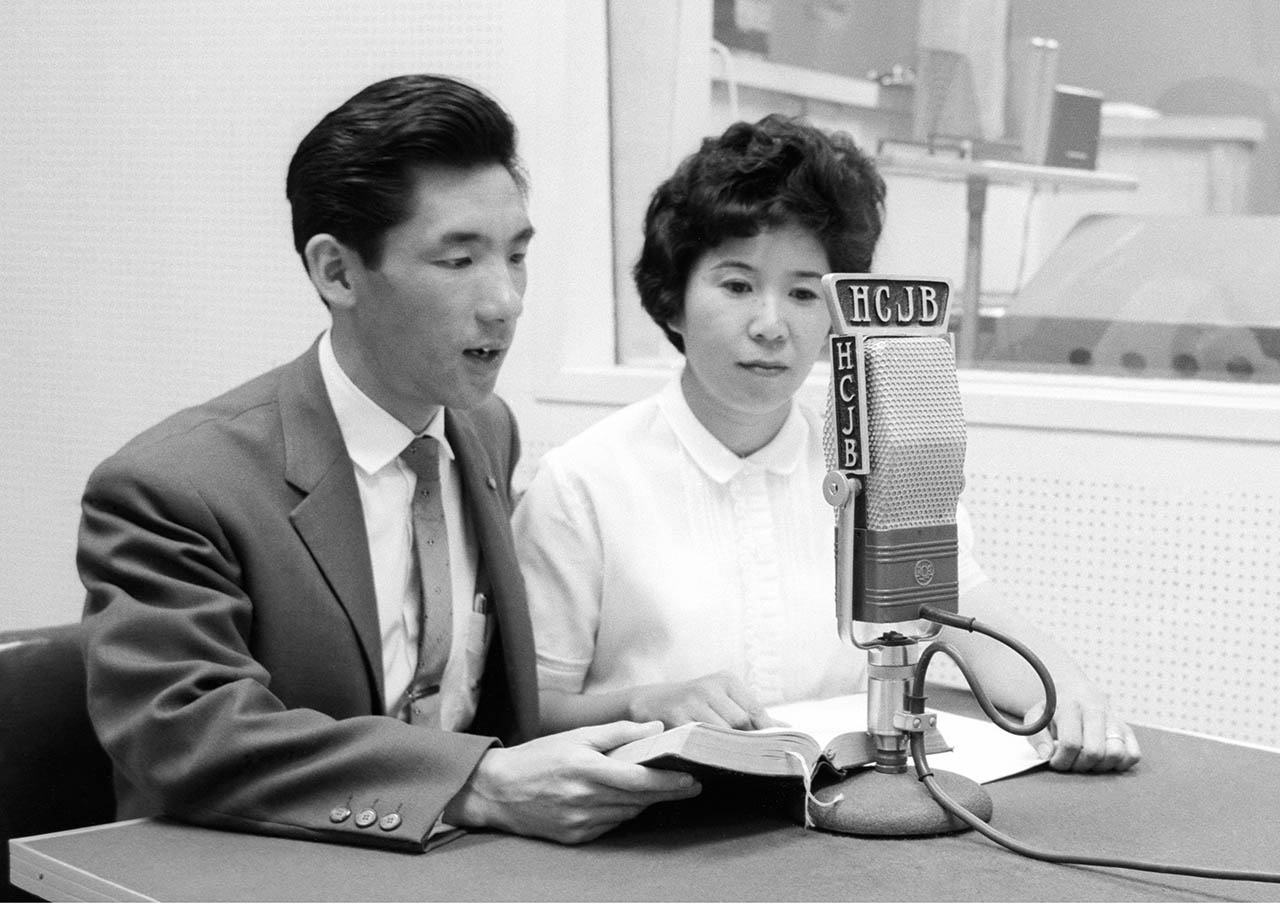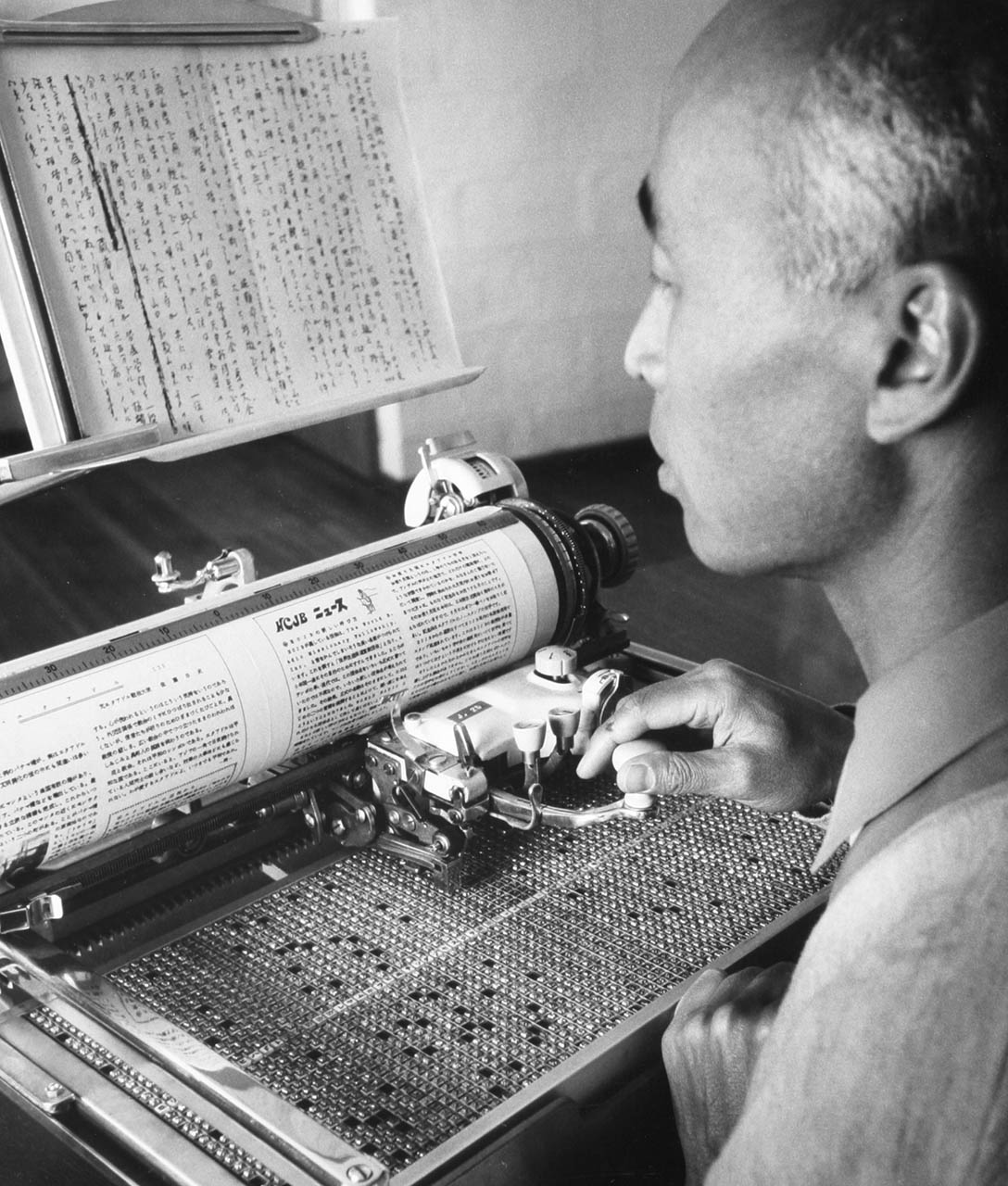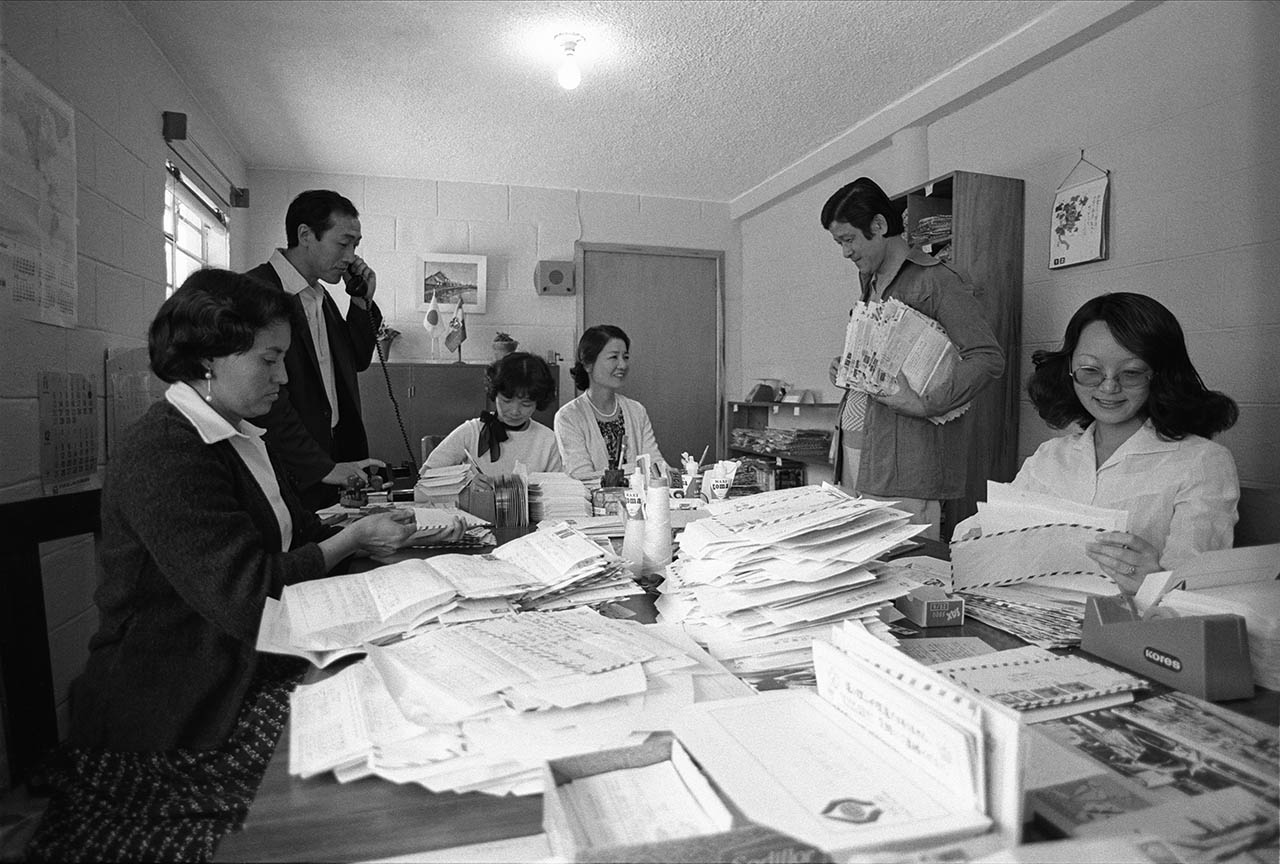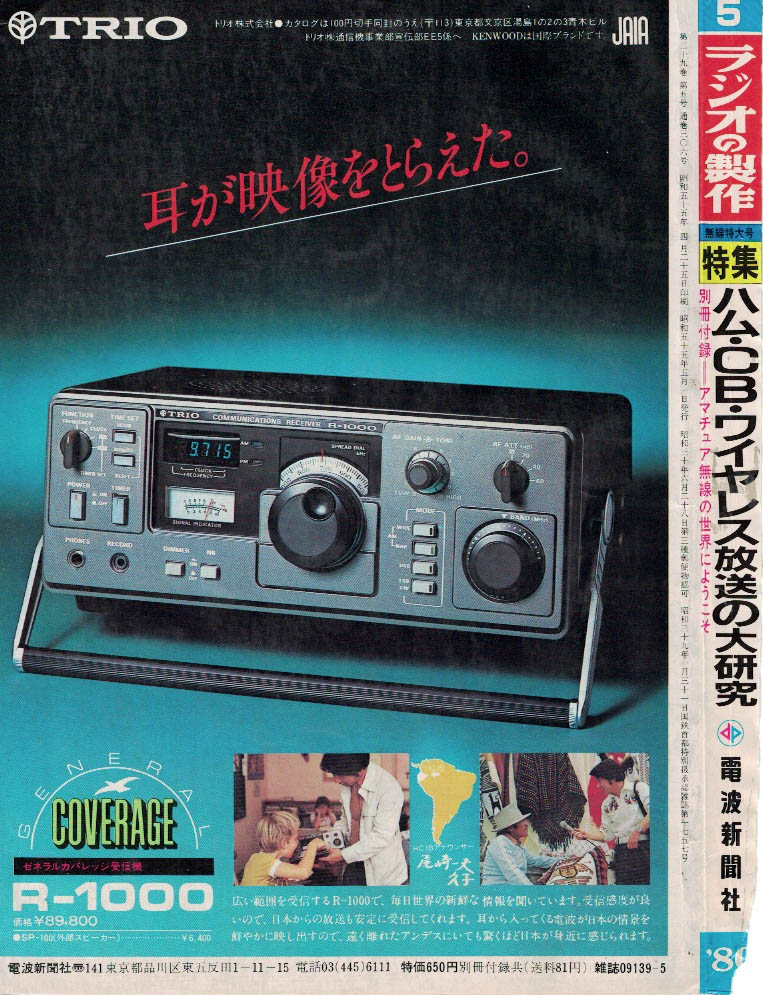 |
HCJB's Japanese broadcasts began as a result of a visit to Quito by Dr. Akira Hatori from the Pacific Broadcasting Association. Dr. Hatori was visiting Japanese immigrants in Brazil. He knew that HCJB was broadcasting in programs like Russian and German, so he wondered why not Japanese. Dr. Hatori visited the station in Quito, Ecuador and asked if HCJB would broadcast Japanese programs to the millions of Japanese immigrants living throughout South America. Not surprisingly, the HCJB said they would, if Dr. Hatori provided the programs. Once back in Japan, Dr. Hatori asked Kazuo Ozaki to begin recording programs for HCJB on reel-to-reel tapes which were then mailed to Ecuador. HCJB began airing these programs in 1962.
 |
One day missionary Hardy Hayes happened to walk by the HCJB’s program control room and heard a very odd program being aired. So he asked the operator what language it was. The operator said it was Japanese. In God's divine providence, Hardy had briefly served as a missionary in Japan, so he immediately recognized there was a problem. The tapes were being played backwards.
Kazuo Ozaki remembers:
"About a month later, we received a letter from HCJB sharing challenges they were facing in using taped programs. On one occasion the tape was played backwards but NOBODY noticed it. This could easily happen again. They pleaded for us to not send the tapes, rather someone who could speak the language!
So, who would go? …to South America? …so faraway. …Ecuador? Where is it?
Then, it dawned on me. When I was a seminary student at Japan Christian College, I met Marj Saint who was visiting from Ecuador and presenting the story of the five missionaries killed in the eastern jungles of Ecuador. [including her husband Nate Saint] I had helped translate her slide show. Marj had re-married Abe Van der Puy, who was the president of HCJB at that time. Abe and Billy Graham were classmates at Wheaton College along with Dr. Hoke, the founder of Japan Christian College, another interesting “connection” with HCJB.
Another HCJB connection was Vic Springer, a friend and TEAM missionary. We worked together to plant a church in Kurihama. I was later surprised to hear that his brother, Joe, was a missionary with HCJB in Ecuador.
Isn’t that amazing that God had already surrounded me with HCJB connections. He was putting things in motion for my future.
We left Japan in June of 1963. It was difficult raising financial support from Japanese churches, so we continued raising support for another 6 months in the U.S. Not knowing anybody in such a large vast country felt like Moses might have felt, wandering around in the wilderness. Every night, before we would go to bed, we would sing the song that says, “I don’t know about tomorrow, but I know who holds tomorrow and I know who holds my hand!”
On January 6, 1963, we arrived in Quito. HCJB missionaries and Ecuadorian staff gathered to welcome us. I greeted them with, “Doy gracias a Dios por poder venir al Ecuador!” Robert Savage, the field director, had encouraged me to memorize this phrase in advance. It means, “I give thanks to God for allowing us to come to Ecuador!”.
After meeting Frank Cook, the station manager, I told him that we would need to wait to begin our broadcasts until the program tapes arrived from Japan.
However, instead of tapes, a letter arrived that gave the cost of producing the programs. Frank promptly responded, “We do not buy program tapes, we produce our own programs! Missionaries come from all over the world and broadcast the gospel in their native language to their people back home!”
So, on May 1, 1964, my wife and I found ourselves in front of a microphone. The Japanese ambassador gave a speech and the HCJB choir sang Great is Thy Faithfulness. The studio was filled with missionary colleagues celebrating the first Japanese program made and broadcast from the Andes Mountains.”
By the 1970’s, the Ozaki’s were discouraged by how few letters they got from listeners.
Kazuo cried out to God asking, “Why don’t we get more letters?”
 |
 |
1972 - 4,301 letters.
1974 - 19,972 letters.
1975 - 48,141 letters.
1976 - 63,416 letters.
Kazuo was overwhelmed with all of the mail they had to respond to. So much so he began begging God, “to stop sending us so many letters.”
What caused the sudden interest in HCJB’s Japanese programs?
One of Japan’s largest radio manufacturers began advertising that their radio could receive HCJB's Japanese programs from Ecuador. The radio pictured in the ad was tuned to HCJB's frequency. What is more amazing, is that these ads were placed in the most prominent place possible--the back covers of major Japanese amateur radio magazines. Later ads would include photos of Kazuo Ozaki recording programs in Ecuador!
God would continue to open many more unexpected doors for the Ozaki's to gain listeners. On several occasions, Japanese television crews traveled to Ecuador to meet and film the Ozakis in action.
